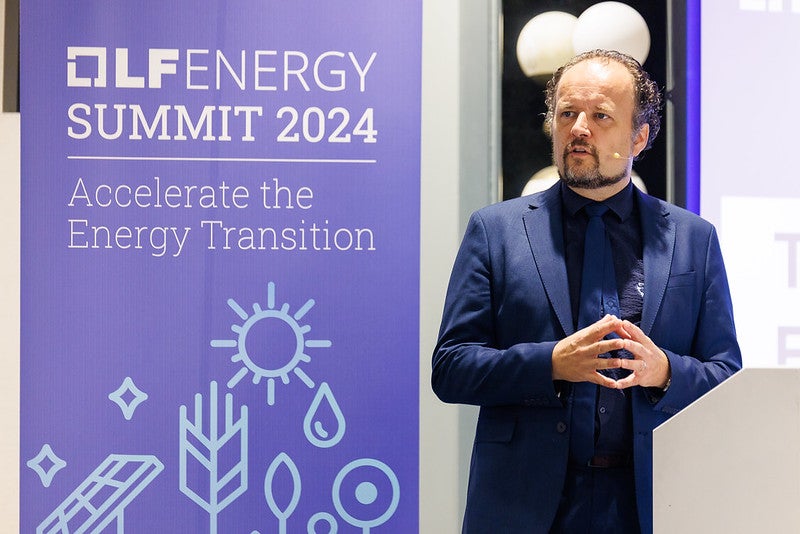LF Energy Summit Recap and Video: Accelerating the Energy Transition through Digitalization and Coordination with Mark van Stiphout
At LF Energy Summit 2024 in Brussels, Mark van Stiphout, Deputy Head of Unit for Research, Innovation, Digitalisation, and Competitiveness at DG Energy at the European Commission, delivered a keynote on how Europe can meet its energy transition goals through digitalization and greater coordination. His presentation titled “The Energy Transition Needs Faster Digitalization That Needs More Coordination” highlighted the urgent need for systemic changes across energy infrastructure and the role digital technologies must play in driving this transformation (full video follows below).
Here are the key takeaways from van Stiphout’s presentation:
1. EU Energy Transition Goals and the Need for Faster Implementation
The European Union is focused on ambitious targets to combat climate change, including a 90% reduction in greenhouse gas emissions by 2040. With initiatives such as the Green Deal and the Fit for 55 package, the EU has already set legal frameworks to increase the share of renewable energy, cut emissions, and improve energy efficiency. However, van Stiphout stressed that while the laws are in place, member states must now accelerate implementation. Achieving these goals requires not just policy but action, particularly around making smart investments in renewable energy infrastructure and driving growth that benefits both society and business.
2. Digitalization as a Critical Enabler of the Energy Transition
van Stiphout underscored the role of digitalization in keeping energy costs down while ensuring smarter and more efficient grid usage. With the growing need for electrification across sectors, he emphasized that Europe cannot rely solely on building new infrastructure. Instead, making existing systems smarter through data exchange and digital technologies will be key. The EU’s digitalization action plan for energy focuses on five priority areas: data exchange, grid modernization, consumer empowerment, cybersecurity, and minimizing the energy consumption of the IT sector itself.
3. Open Source and Collaborative Innovation: The Way Forward
Open source software is an essential tool in the EU’s energy digitalization strategy. van Stiphout highlighted the benefits of adopting open source technologies in terms of flexibility, interoperability, and reducing costs. He encouraged stakeholders to take an open source approach to building digital solutions, particularly around data exchange for demand response, smart charging, and energy efficiency in buildings. The European Commission, through programs like Horizon Europe, is actively supporting projects that prioritize open source solutions, accelerating innovation and market deployment.
4. The Role of Grids in the Transition: Digital Twins and Smart Management
Electricity grids are at the core of Europe’s energy transition, and digital technologies must be leveraged to manage them more efficiently. van Stiphout spoke about the EU’s initiative to create a digital twin of the European electricity grid, which will facilitate faster adoption of innovative technologies and smarter grid management. He highlighted that network operators are starting to embrace open source frameworks, allowing for more agile and cooperative innovation. This is essential to avoid overbuilding infrastructure while still meeting peak energy demands.
5. A Holistic Approach: Beyond Electricity to Industrial Decarbonization
While much of the focus is on electrifying the grid, van Stiphout also touched on the broader challenges of decarbonizing energy-intensive industries. He emphasized the need for an integrated approach to managing different energy flows—electricity, heat, CO₂, hydrogen—to ensure these sectors can transition efficiently without sacrificing competitiveness. The lessons learned from electrifying the grid can be applied to other infrastructure challenges, ensuring that digitalization drives faster decarbonization across all sectors.
